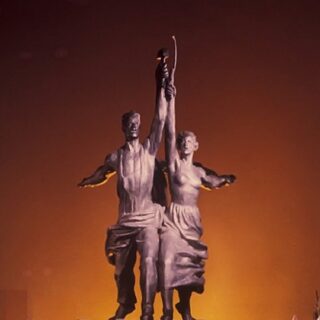
The Origins of Mass Political Terrorism in the Modern World. Mass terrorism was born in Russia.
Terrorism — organized, armed violence against governments and societies — did not begin on September 11, 2001 with the attacks by Al-Qaida in the United States. Although politically motivated killings have happened over the centuries, terrorism as a specific form of political struggle has its origins in the late 19th and early 20th centuries — basically between 1870 and 1914 — in many European countries, including the Russian Empire. Mass terrorism was born in Russia.
Historians have often called the period from 1870-1914 the Era of Dynamite because dynamite was often used for terrorist acts instead of the more traditional weapons of daggers and revolvers.
In European countries, anarchists and nationalists were the main practitioners of terrorism. Anarchists, generally in Spain, Italy and France, assassinated monarchs, presidents, prominent state figures and ordinary people and considered terrorism a form of “propaganda by the deed”. Nationalist terrorists, seeking autonomy or independence, generally operated in Ireland, the Balkans, and the Ottoman Empire.
Casualty figures for terrorism in European countries were large. Dutch researcher Beatrice DeGraaf estimated that anarchists between 1880-1914 killed 160 people and wounded more than 500 people in Europe and the United States.
Nationalist terrorists, especially in the Balkans, killed even more people. For example, Macedonia had a population of 3 million in the early 20th century. In 1907, British diplomats estimated that there were 1,370 cases of violent deaths in Macedonia — four victims per day.
The assassination of Austrian Archduke Franz Ferdinand in 1914 by Gavrilo Princip, a member of the Serb nationalist organization Young Bosnia is considered the spark that ignited World War One.
However, terrorists in the Russian Empire set a European-wide record in casualties. Between 1870-1900, leftist terrorists killed 100 people. The major terrorist act was the assassination of Tsar Alexander II on March 1, 1881 by members of the People’s Will.
The peak of terrorist violence came in the early 20th century especially during the Russian Revolution of 1905-1907. Terrorists, mostly socialists and anarchists, killed or wounded nearly 17,000 people between 1905-1910. In fact, terrorism continued long after mass movements in the revolution had been crushed.
The duration of terrorism in Russia also set a European-wide record. Outbreaks of terrorism in Russia began on April 4, 1866 (old style) with the attempted assassination of Alexander II by revolutionary Dmitrii Karakozov and ended September 1, 1911 with the assassination of Prime Minister Pyotr Stolypin by revolutionary and police agent Dmitrii Bogrov.
Terrorism in the Russian Empire passed through three stages.
- Preliminary stage from 1866-1869: the major acts of terrorism were Karakozov’s attempted assassination of the tsar and the murder of student Ivan Ivanov by Sergei Nechaev and members of the group The People’s Vengeance.
- The first wave of terrorism from 1878-1894. The People’s Will was the dominant terrorist organization.
- The second wave of terrorism from 1901-1911. One can describe the participants as a crowded playing field. Participants in terrorism included Empire-wide socialist parties including the Socialists-Revolutionaries, Social Democrats — both Bolsheviks and Mensheviks, left-wing ethnic minority parties, anarchists, left-wing marginal groups, members of the far-right Union of the Russian Empire (Black Hundreds). Although the overwhelming majority of terrorist acts was committed by leftists, right-wing terrorist acts marked the beginning of right-wing terrorism in Europe.
The People’s Will formulated the major goals of terrorism:
- To defend the revolutionary movement against police spies, traitors, and cruel officials.
- To disorganize the government through assassinations of officials. This would lower the government’s authority. Regicide—assassination of the tsar — was the ultimate goal of Russian terrorists. The People’s Will believed that because political power was concentrated in the hands of the tsar, his assassination would automatically cause the political system to collapse.
- To inspire the common people to revolution.
- To force the government to grant concessions such as a constitution.
Hidden goals of the terrorists included:
- To provoke the government into becoming more repressive so that a revolution would be inevitable. This goal produced results with the government enacting extraordinary legislation.
- To use terrorism as a pre-emptive strike to prevent the transformation of Russia into a European liberal and constitutional state. This would allow Russia to go directly to socialism and bypass the capitalist stage of development. This tactic had spectacular results. Before his death, Alexander II agreed to a reform that would allow representatives of local self-government to discuss legislation in the State Council. This could have been the first step toward Russia becoming a constitutional state. The assassination delayed the development of constitutionalism in Russia for 25 years.
Terrorists in Russia practiced both political and economic terrorism. In the 20th century, this turned into indiscriminate killing. Victims of political terrorism included members of the Imperial family, ministers, governors, generals and other high officials, rank-and-file bureaucrats, employees, street policemen, soldiers, Cossacks, Black Hundreds and other monarchists, and many innocent bystanders. Terrorists from national minority parties killed members of other nationalities and members of their own nationality seen as traitors. Victims of economic terrorism included not only nobles and capitalists, but also shopkeepers, street vendors, engineers, technicians, customers in restaurants and cafes and many other ordinary people considered exploiters.
Terrorists from all parties and movements practiced “expropriations””—armed robberies of banks, financial institutions, and private individuals to finance revolutionary operations. Robberies often attracted the participation of common criminals who could then claim that they were revolutionaries and claim the relatively privileged status of political prisoners.
Terrorist violence during the Revolution of 1905-1907 was only one of several types of mass violence. These included:
- Mass violent protest movements of workers, peasants, urban residents, students, soldiers, sailors, ethnic and religious minorities, women, youth along with mass movements of the political parties and anarchists. The violence of mass movements included uprising, strikes, demonstrations, mutinies in the army and fleet, pogroms, robbery and destruction of government and private property, inter-ethnic and inter-religious conflicts, overthrowing local authorities and the establishment of alternative power right up to the formation of village republics, political and criminal of government and private individuals, the frequent use of lynch law and other forms of mass vengeance. The most explosive outbreaks of mass violence occurred in the borderlands of the empire—Poland, the Baltics, Belarus, Ukraine, Moldova, the Caucasus—where social, ethnic and religious factors intersected. Major outbreaks of terrorism also happened in the borderlands.
- Criminal violence spiralled with the breakdown of order. Police were often unable to distinguish between political and criminal motives in murders and robberies.
- Government violence for the suppression of revolutionary disturbances. Methods included use of punitive expeditions, passing extraordinary legislation, use of civil and military courts along with administrative penalties of exile.
The many varieties of violence during the Revolution of 1905-1907 distinguished Russian terrorism from terrorism in European terrorism along with the sheer massiveness of terrorist activity and its duration. Even during periods when terrorism was not practiced, terrorism was never rejected by revolutionaries as a form of political struggle. In fact, many members of the government and political movements came to regard terrorism as an extremely useful way of advancing and obtaining their goals.
During the Era of Dynamite, one can already speak of elements of Russian uniqueness in terrorism in Europe. In many ways, tendencies in Russian terrorism between 1866-1911 foreshadowed many trends in European and world terrorism in the 20th and 21st centuries.
Terrorism and Everyday Life in the “Era of Dynamite”
The purpose of terrorism is to terrorize people. The unexpected nature of terrorist attacks in public places and the killing of bystanders, including women and children, sowed panic and fear among Europeans. Many Europeans believed in terrorist conspiracies, especially in a Black International of anarchists. Others blamed Jews, immigrants, and refugees for terrorism and other forms of political violence. Of course, political and social conflicts in European countries often turned violent, but terrorism was something seen as new and frightening.
Europeans as a rule did not support terrorism as a form of political struggle because political parties were generally legal. In Russia in the early 20th century, few parties were legal.
For many reasons, terrorism became a self-perpetuating phenomenon in Russian political life. The People’s Will had already shown that it could shake the foundations of the state and that retreat from terrorism was impossible and considered an insult to the memory of the martyrs who had died for the cause.
Factors allowing the massiveness and continuity of terrorism included:
- The existence of the socialist intelligentsia. European countries had their Bohemian intellectuals, marginalized elements and conspirators. The Russian revolutionary intelligentsia constituted an entire stratum of the educated population and its only aim was the destruction of the existing political-social order.
- The process of radicalization through which the intelligentsia continually replenished its ranks. Radicalization was especially strong among university and secondary school students, women, members of ethnic and religious minorities.
- The criminalization of many political movements, especially liberals, through their support of terrorism.
- A mentality of ambivalence among conservatives, far rightists and other supporters of the government toward its fight against terrorism. Conservatives and other rightists often withheld their support from the government largely because the government did not trust any public initiative even from the most loyal elements.
- The international information war, conducted by socialists and liberals between 1880-1914. The opposition successfully convinced many Europeans and Americans that because of political conditions in Russia, terrorism was a completely legitimate form of struggle against despotism.
- The emergence of Black Hundred and other far-right populist terrorism as an expression of the “revolution from the right”.
Terrorism did not have the support of the common people in Russia although they had their own methods of violence. One can best describe terrorism in the Russian Empire as a derivative of the hostile relationship between the government, as represented by the tsar, and educated society, as represented by political parties and movements.
Terrorism and Culture in the “Era of Dynamite”
Terrorism was an expression of a widespread culture of violence before the outbreak of World War One in 1914. Terrorism is a violation of traditional legal, religious, moral, and ethical norms against killing. Terrorists in Russia were the first ones to violate these norms on a massive scale. The outbreak of World War One allowed millions of Europeans to participate in mass killing.
The culture of violence in pre-1914 Europe included:
- Open expressions of hatred toward people of different social classes, races, ethnic groups, and religions.
- Approval of violence and mass killing of natives in European colonies.
- As the Ottoman Empire lost territories in the Balkans, millions of Muslims were deported.
- Glorification of violence in the arts. For example, operas featured killings of tyrants, revolutions, and mass violence.
- Literary and popular culture glorified social bandits—like Robin Hood—as avengers of the people.
- Increasing disillusionment with liberalism and liberal values and an admiration of ideologies emphasizing action and violence. This period marks the prehistory of National Socialism, Fascism, and related ideologies.
Governments and Terrorism
To cope with terrorism, European governments took measures to improve the work of political police forces and to tighten internal security. They also undertook international measures. In 1898, government officials from many countries met in Rome to discuss joint measures against anarchism and terrorism. Diplomats in St. Petersburg in 1904 signed protocols on joint police action against anarchists. The organization Interpol was formed after World War One.
However, these measures were largely ineffective. European governments usually refused extradition requests from the Russian government and terrorists could claim political asylum in European countries. Russian terrorists could plan terrorist operations against Russia but it was understood by European governments that terrorists from other countries would not conduct terrorist operations against the governments and societies of host countries. Anarchists tended to ignore this restriction on the grounds that the class enemy could be found anywhere.
European socialists and liberals often contributed money and weapons to Russian terrorists and revolutionaries and governments did virtually nothing to prevent this. Note that before 1914, governments did not support terrorism in other countries as a means of destabilizing the governments of their opponents. Unlike today, terrorism was not regarded as a form of proxy or surrogate war.
The Russian government passed emergency laws after the assassination of Tsar Alexander II in 1881 that remained until the fall of tsarism in 1917. These laws allowed police to arrest and exile anybody suspected of political crimes and allowed officials to transfer all cases involving violence to military courts which used a speeded-up procedure and could impose the death penalty more easily. In fairness, European governments also made extensive use of emergency laws in dealing with real or imagined opponents.
Conclusion
The history of political terrorism in the Russian Empire between 1866-1911 is the story of the birth and development of mass terrorism in the modern world. The massiveness and continuity of terrorism in Russia sharply distinguished it from terrorism in European countries. Radicals in Japan, China, India, and other Asian countries admired what they called the “Russian method” (terrorism). In so many ways, terrorism in the Russian Empire foreshadowed so many tendencies in the terrorism of today.
Unfortunately, much of the story of Russian terrorism is still unknown. Knowing this story can help us understand much of why terrorism exists today.





